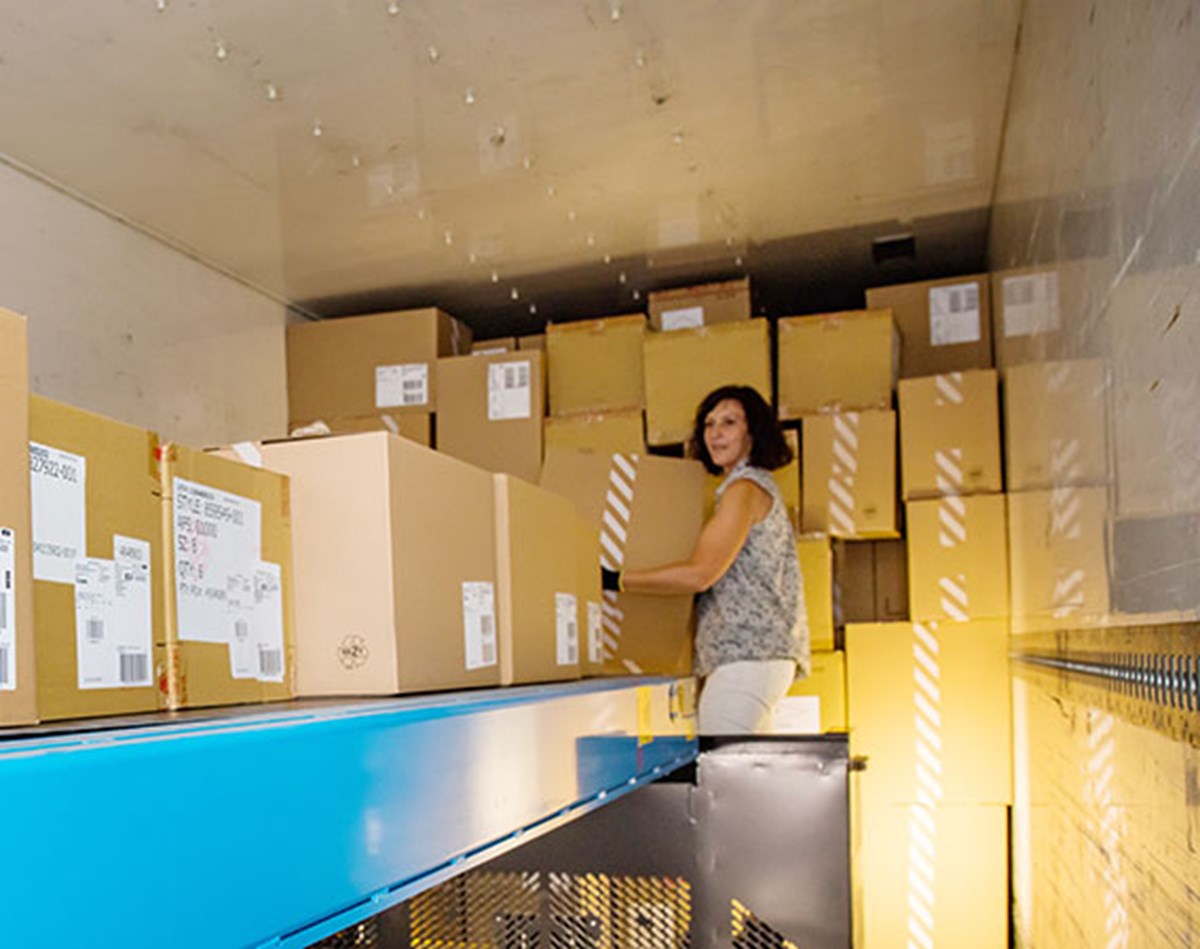Handling loose-loaded cargo in a world of pallets
Technological advancements in handling equipment have become vital in efforts to stay cost-effective. Managing delivery times is a global challenge – as consumers increasingly bypass the high-street and instead shop online. Switching to loose-loaded cargo and deploying automation can help retailers survive in a competitive landscape that is changing rapidly.
Fast Track
You don't have time to read the whole story now? Get the highlights here and download the PDF for later.
- The driving forces are to up-scale manual handling operations and find innovations to help deal increase capacity.
- Difficulties in attracting labour and government regulations are leading to the use of automation in materials handling equipment.
- Handling loose-loaded cargo with telescopic conveyor solutions will increase trailer capacity and reduce the overall load time compared to using pallets.
E-commerce continues to surge, and parcel volumes are sharply rising, in response to the pandemic and the transformation in consumer behaviour. For this reason, many parts of the supply chain are running on extremely tight capacity. Warehouse facilities are challenged to get their loose-loaded cargo quickly out of the door, especially when the operation is only geared towards palletized cargo.
Warehouses are struggling to handle the influx of online orders efficiently, dealing with stock destined for stores that are still under lock-down, and providing the short delivery times expected by consumers. Many brick-and-mortar stores now play a significant part in distribution, as they have taken on the role of fulfilment centres.
With e-commerce set to grow over the next five years, retailers must find new handling technologies to enable an effective operation that can flexibly handle different types of cargo and distribution. Implementing solutions that accommodate loose loaded cargo to optimise capacity and improve efficiency are pushed forward on the Operations and Logistics Manager’s agenda.

Moving from pallets to loose-loaded cargo
Retailers are inherently transitioning from pallets to loose-cargo and advanced conveyor technology.
Transporting quarter or half pallets is extremely inefficient from a trailer capacity perspective, as Jan Soelling-Joergensen, Sales Director at Caljan Germany, illustrates:
► The problem is if you load a trailer only with pallets, there is a lot of unused space in the sides and above. That space could potentially have been used to load more cargo, meaning that you could have increased your trailer capacity and reduced your overall freight costs.
Removing pallets from the equation typically increases a 53-foot-long trailer’s capacity by an extra 8,000 parcels, packages, and polybags. Transporting higher volumes of loose cargo is a more cost-efficient and environmentally friendly way of shipping. It saves time on handling, requires fewer vehicles, and eliminates plastic wrap needed to stabilize cargo. All in all, improving the carbon footprint of transportation of goods.
Connecting the loading dock with the warehouse
Using advanced handling technology such as telescopic conveyor solutions enable facilities to increase the connectivity between the warehouse and the loading dock. This type of equipment is often considered due to its high degree of automation and its mobility. Jan Soelling-Joergensen continues:
► If your warehouse has space limitations, you can swiftly move the equipment around to suit your specific needs. Telescopic conveyor solutions allow you to connect the loading dock with your sorting and picking area, enabling you to reduce the handling time of your loose-loaded cargo drastically.
It is also favoured for its ability to help reduce the need for labour
► Telescopic conveyor solutions allow you to minimize the amount of time and hands involved in the loading process. We typically see 3-4 people involved in the (un)loading process, which is reduced to only one person when using telescopic conveyor solutions. Eliminating the time you would typically spend stretch wrapping pallets and operating forklifts back and forth, explains Ron Dwyer,
Regional Manager - West at Caljan USA.
An essential driver for choosing technologically advanced handling equipment is the increasing difficulty to attract labour across the logistics and materials handling industry. Other factors include government regulations surrounding work, health, safety, and ergonomic requirements of operating handling equipment.
In November 2020, we worked together with a customer to optimise their operation with two telescopic conveyors, and we helped them achieve a 62% time improvement. This meant that they went from spending 4 hours on unloading a trailer to only 1.75 hours.
– Ron Dwyer, Regional Manager - West at Caljan USA
Over 50% time-improvement in handling cargo
Purchasing new loading equipment is a significant capital investment. However, businesses discover that the return on investment on telescopic conveyor solutions are visible from day one of operations. The throughput of cargo is immediately increased, fewer people are required, create a more expeditious loading process.
► You should expect a time-improvement of at least 50% from your manual operation. In November 2020, we worked together with a company to optimise their operation with two telescopic conveyors, and we helped them achieve a 62% time-improvement. This meant that they went from spending 4 hours on unloading a trailer to only 1.75 hrs, reveals Ron Dwyer.
Applying new automated solutions to the handling operation, such as telescopic conveyor solutions, enables businesses to keep on top of their delivery times, increase the trailer capacity, and seamlessly handle both loose-loaded cargo and pallets in the same facility.